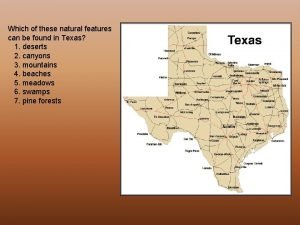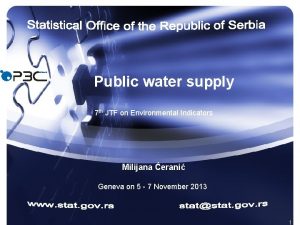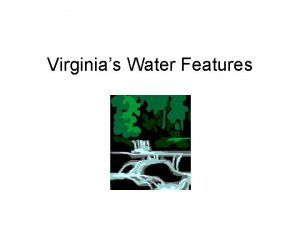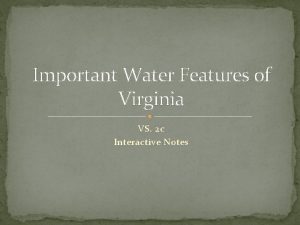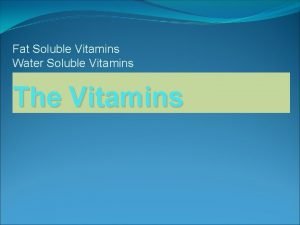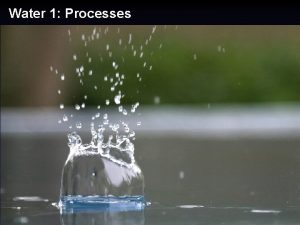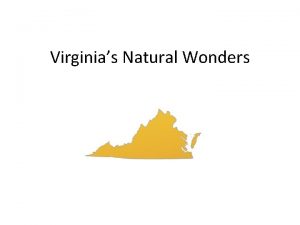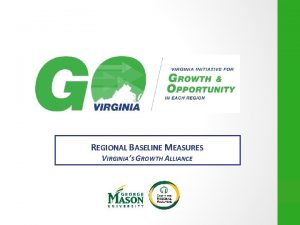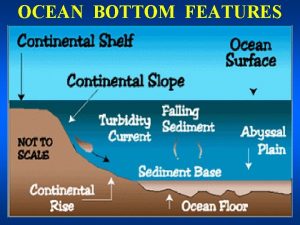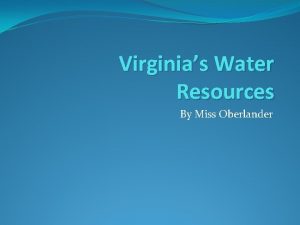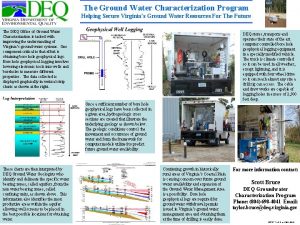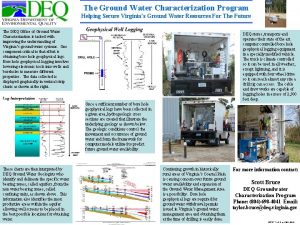Virginias Water Features Water and Virginias History Water














- Slides: 14

Virginia’s Water Features


Water and Virginia’s History • Water features were important to the early history of Virginia. • Many early Virginia cities developed along the Fall Line, the natural border between the Tidewater (Coastal Plain) and Piedmont regions.

The Fall Line • The Fall Line is where the land rises sharply and where the waterfalls prevent further travel on the river.

Development of Cities • Cities developed in areas that had access to the Atlantic Ocean. • The Atlantic Ocean provided transportation links between Virginia and other places such as Europe, Africa, and the Caribbean.

Development of Cities • Cities developed around the mouth of the Chesapeake Bay. • The Chesapeake Bay has rich natural resources and a natural harbor. • Harbor – a part of water deep enough to anchor a ship.

Development of Cities • Natural resources – things that exist in or are formed by nature. • The Chesapeake Bay provided a safe harbor and was a source of food and transportation for early Virginians.

Virginia’s Four Major Rivers • All of these rivers begin in the western portion of Virginia and flow eastward until they empty into the Chesapeake Bay. • The four major rivers that flow into the Chesapeake Bay are separated by peninsulas. • James River – Flows into the Chesapeake Bay. Richmond and Jamestown are located along the James River. • York River – flows into the Chesapeake Bay. Yorktown is located along the York River.

Virginia’s Four Major Rivers • Potomac River – Flows into the Chesapeake Bay. Alexandria is located along the Potomac River. *The Potomac River forms the northern boundary of Virginia. • Rappahannock River – Flows into the Chesapeake Bay. Fredericksburg is located on the Rappahannock River!

Virginia’s Four Major Rivers • Each river was a source of food and provided a pathway for exploration and settlement of Virginia.

Lake Drummond • Lake Drummond is located in the Coastal Plain (Tidewater) region. • Lake Drummond is a shallow natural lake surrounded by the Dismal Swamp.

The Dismal Swamp • Located in the Coastal Plain (Tidewater) region. • A variety of wildlife live in the Dismal Swamp. • George Washington explored and surveyed the Dismal Swamp.

Virginia’s Eastern Shore Peninsula • Peninsula – a piece of land bordered by water on three sides. • VA’s Eastern Shore Peninsula is separated from the mainland of Virginia by the Chesapeake Bay!

Virginia’s Eastern Shore Peninsula • The Eastern Shore is a peninsula bordered by the Chesapeake Bay to the west and the Atlantic Ocean to the east.
 Water and water and water water
Water and water and water water Python compilier
Python compilier Describe the influence of physical features of punjab
Describe the influence of physical features of punjab Gulf coast prairies and marshes climate
Gulf coast prairies and marshes climate Also history physical
Also history physical Jtf water features
Jtf water features Virginia water features
Virginia water features Groundwater
Groundwater Virginia water features
Virginia water features First water transport
First water transport Vitamin water history
Vitamin water history Throughout history water
Throughout history water Dock water allowance formula
Dock water allowance formula Young and dyslexic language features
Young and dyslexic language features Features advantage benefits
Features advantage benefits



